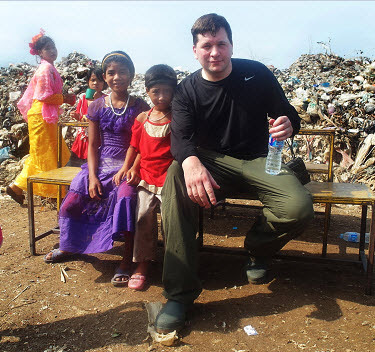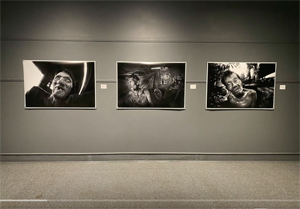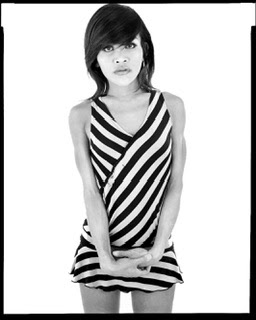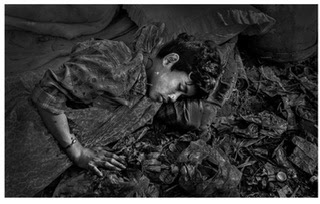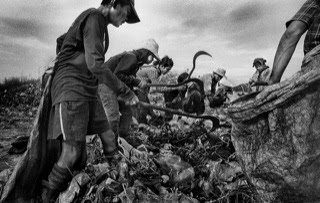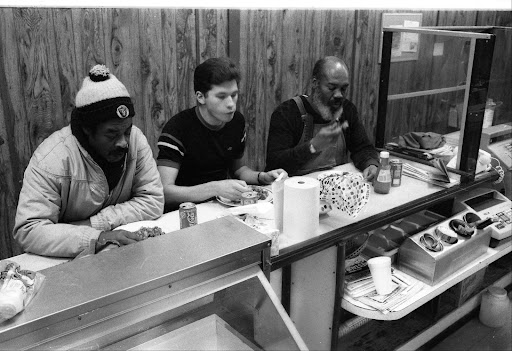For fun am working on a couple of hard copy book layouts. I bought 2 nice binders from Goodwill today, $1.75 each. So thought I would do up a couple of hard copy form book print outs. My friend Larry is my inspiration here. He is printing a major and important book of his life in photography, at a cost of over $60000. I do not have the money to self publish as he is doing, and no publisher will pay to publish a book of my photographs but I can make up these little home made binder book efforts myself. I will just do it for the joy of doing it.
The 2 binder books will be on "Families of the Dump" and "The People Who Live Under The Freeway"series. Most of the images will be from this last trip. I will give this my best effort. I plan on putting no titles with the pictures, will just do up a basic written intro about the 2 projects, explaining their history, with 50 or so pics followiing. I will let the pics speak for themselves. There is a simplicity and honesty to that. I like the single photo with a white mat look, with no photograph to the edge bleeds, no images half hidden in the books binding, and no multiple photos per page stuff. Having a single picture all by itself with no text, surrounded by white allows for simple and beautiful look. Text can be helpful but it often detracts from the viewing experience. I want the viewer to put their own, thoughts, feelings and stories to the photographs, that is what a great poem, song and novel does. Good art allows the readers-viewers to fill in the blanks, using their own imaginations and life experiences to complete things.
Update* Some relevant comments from a personal and facebook friend Pieter, on captions for photos. Thought I would share it here so we could all benefit from his well thought out reply to my post.
"It makes sense to strive for clarity and simplicity. I prefer an approach that is factual and straightforward when it comes to documentary work. I try to avoid captions or titles that editorialize other people's lives or sensationalize the content. Melodramatic captions reveal more about the photographer's biases/assumptions/privilege than they about any external reality -- and they often reinforce negative stereotypes about "the other" by reducing people to victimhood. (And sometimes introductions and captions serve to glorify the photographer, which is even more cringe-worthy -- playing into tired old tropes of heroic adventurers and selfless humanitarians.) Another consideration is to provide a thorough and balanced description of the context in which the photos were taken and our relationships to the people we are photographing. This moves our work to a deeper and more ethically responsible level. If we are serious about the work, we need to avoid being "accidental tourists" who parachute into communities looking for award-winning photos only to return to lives of relative affluence. I appreciate your commitment to work in a responsible manner. Authentic relationships are more important than images."
The 2 binder books will be on "Families of the Dump" and "The People Who Live Under The Freeway"series. Most of the images will be from this last trip. I will give this my best effort. I plan on putting no titles with the pictures, will just do up a basic written intro about the 2 projects, explaining their history, with 50 or so pics followiing. I will let the pics speak for themselves. There is a simplicity and honesty to that. I like the single photo with a white mat look, with no photograph to the edge bleeds, no images half hidden in the books binding, and no multiple photos per page stuff. Having a single picture all by itself with no text, surrounded by white allows for simple and beautiful look. Text can be helpful but it often detracts from the viewing experience. I want the viewer to put their own, thoughts, feelings and stories to the photographs, that is what a great poem, song and novel does. Good art allows the readers-viewers to fill in the blanks, using their own imaginations and life experiences to complete things.
Update* Some relevant comments from a personal and facebook friend Pieter, on captions for photos. Thought I would share it here so we could all benefit from his well thought out reply to my post.
"It makes sense to strive for clarity and simplicity. I prefer an approach that is factual and straightforward when it comes to documentary work. I try to avoid captions or titles that editorialize other people's lives or sensationalize the content. Melodramatic captions reveal more about the photographer's biases/assumptions/privilege than they about any external reality -- and they often reinforce negative stereotypes about "the other" by reducing people to victimhood. (And sometimes introductions and captions serve to glorify the photographer, which is even more cringe-worthy -- playing into tired old tropes of heroic adventurers and selfless humanitarians.) Another consideration is to provide a thorough and balanced description of the context in which the photos were taken and our relationships to the people we are photographing. This moves our work to a deeper and more ethically responsible level. If we are serious about the work, we need to avoid being "accidental tourists" who parachute into communities looking for award-winning photos only to return to lives of relative affluence. I appreciate your commitment to work in a responsible manner. Authentic relationships are more important than images."
 |
| 2 prints from "Families of the Dump" |










